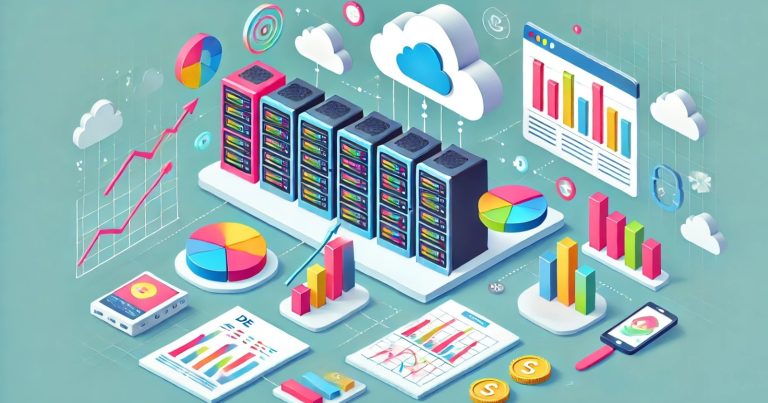Types of big data analytics are various ways that we use to find trends and develop useful information by analyzing large and complex datasets. There are four primary types of analytics: descriptive, diagnostic, predictive, and prescriptive. These techniques assist enterprises and organizations in improving decision-making by answering what has happened, why it happened, what might occur next, and what should be done. The types of big data analytics come in handy for professionals who work with data in an intelligent and impactful way.
What is Big Data Analytics?
Big data analytics is the process of studying and analyzing vast and varied data sets to uncover hidden patterns, unknown associations, market trends, and customer preferences. It utilizes sophisticated tools and methods to gather, interpret, and assess this information, allowing businesses and governments to make more informed choices.
By implementing big data analytics, organizations can process and hold large amounts of data at high speed and develop confidence-based decisions. This new digital environment creates new paradigms as data being ingested at staggering quantities. Since Idk how to make decision, we have such high computing power and we have such an amount of data we can apply this data for decision-making. Data Driven Decisions: Explanation- Data-driven decisions are largely based on previous trend observations that can lead to profitable outcomes.
Types of Big Data Analytics
There are four key types of big data analytics, each type answering a different type of question. When businesses use these class of types properly, they can have an in-depth understanding of their data and strategise accordingly The types of big data analytics are used to solve different problems. All together makes the perfect picture for smart be planning.
Descriptive Analytics
Descriptive analytics describes what has already occurred by transforming raw data to a more understandable form. Businesses have dashboards and reports for it, such as key numbers like monthly sales or website visitors. This kind of analytics allows teams to analyze their previous performance and track key performance indicators (KPI). It provides a clear view of history though, making it easier to plan next steps.
Diagnostic Analytics
Diagnostic analytics goes a step further and reveals the cause of an event. It explains the reasons for good or bad results for business. Sales decline in one area can, for example, be analytically explained using diagnostic tools. It employs techniques such as data mining and correlation analysis to uncover patterns. This kind of analytics enables better decision-making and improved performance.
Predictive Analytics
Predictive analytics be used to make assumptions of what may happen in the future based on previous data. It enables businesses to predict trends such as customer purchasing habits or future share prices. This approach leverages statistical models and machine learning. It requires clean and vast data sets for accurate outcomes. It’s used by businesses to plan for the future and to mitigate risks.
Prescriptive Analytics
Prescriptive analytics takes it a step further by recommending actions to take. It reviews historical and current data to suggest optimal solutions. It can, for instance, recommend the fastest delivery route to conserve time and petrol. It integrates A.I. with a suite of optimization tools to inform decision-making. It aids in making better decisions in sectors such as healthcare, logistics, and planning.
Role of Big Data Analytics
At present, big data analytics helps a lot in every field. From online retail to healthcare, it enables organizations to understand users, predict outcomes, and take better actions. The role of Big Data Analytics is influencing our decisions. It enables teams to find answers faster and take actions that save money, time, and resources.
- Data Transferring: This step includes collecting the data and information from various sources and converting them into a common format for future analysis. Compared to other steps data mining can consume considerably more time, but it is essential to get a complete dataset.
- Data Management: After collecting the data, it must be stored, managed, and readily available. Mining is a data-rich activity that generates lots of information, so we need a database to handle all of this data. SQL (Structured Query Language) is still one of the most widely used tools for database management especially for querying and analysing data stored in relational databases.
- Statistical Analysis: Data that is collected is analysed statistically to find out trends and patterns. Data is interpreted using statistical modeling and predictions about future trends are made. Data statistics and graphical modelling are often used in open-source programming languages (such as Python) or specialist packages (R).
- Data Representation: The outcome of data analytics has to be represented effectively to the stakeholders. The last step is to report the results in a way that is accessible and understandable to different stakeholders (including decision-makers, analysts, and shareholders). Through proper representation of data helps take informed decision making and grow the business.
Steps in Big Data Analysis
There are many important steps in the process of big data analysis. This process shows how, step by step, the data becomes more organized and clearer to make the right decisions. This helps companies deal with big data in a structured and intelligent method to have the ability to make data-based choices.
- Group Data: This requires adding data to find out how the data will be grouped or used to dichotomise. Analysis of Data is categorised and can include age, demographic, income, gender, etc., and is usually either numerical or categorical.
- Data collection: Collecting data from various sources using computers, online platforms, cameras, environmental sensors, or even by human personnel.
- Data Structuring: After data collection, it requires to be arranged in a structured format to enable it for analysis. and could include spreadsheets or applications used for statistical data management.
- Data Review: The raw data is reviewed to maintain to ensure its accuracy. This (Data Cleaning Process) includes recognizing and eliminating any redundant or incorrect records, alongside resolving any missing or partial data. By cleaning the data, you can reduce or remove biases and errors that will lead to the wrong analysis result.
Relevance to ACCA Syllabus
Big Data Analytics features in the digital capabilities emphasis within ACCA’s Strategic Business Leader (SBL) and Audit and Assurance (AA) papers. Nine ACCA exams require students to understand the four types of big data analytics—descriptive, diagnostic, predictive, and prescriptive—and how big data analytics improve financial decision-making, performance monitoring, and fraud detection. These types of analytics also enable higher-quality audits and more informed business leadership.
Types of Big Data Analytics ACCA Questions
Q1: What type of analytics provides auditors with an understanding of what occurred in the past based on historical data?
A) Prescriptive analytics
B) Diagnostic analytics
C) Predictive analytics
D) Descriptive analytics
Ans: D) Descriptive analytics
Q2. Which category of financial KPIs is primarily descriptive and aimed at identifying the reason behind a financial performance problem?
A) Descriptive analytics
B) Diagnostic analytics
C) Predictive analytics
D) Static analytics
Ans: B) Diagnostic analytics
Q3: What type of analytics is used to predict cash flow trends over time by examining patterns?
A) Predictive analytics
B) Diagnostic analytics
C) Historical analytics
D) Manual analytics
Ans: A) Predictive analytics
Q4: In analytics, what type help accountants take recommended actions based on data analysis?
A) Descriptive analytics
B) Prescriptive analytics
C) Static analytics
D) Predictive analytics
Ans: B) Prescriptive analytics
Q5: Which type of analytics improves decision-making in ACCA’s Strategic Business Leader paper?
A) Prescriptive analytics
B) Only descriptive analytics
C) Text-based analytics
D) Single-variable analysis
Ans: A) Prescriptive analytics
Relevance to US CMA Syllabus
In US CMA Part 1: Financial Planning, Performance and Analytics, students should know how big data analytics plays a part in strategic decision-making. Analytics types such as BE, DE, PE, and AE are primarily used for performance evaluation, forecasting, cost and variance analytics. These tools helped CMAs give their stakeholders actionable insights on increasing both financial results and overall business efficiency.
Types of Big Data Analytics CMA Questions
Q1: Which type of analytics is most appropriate for generating financial statements that provide an overview of sales data broken down by month?
A) Predictive analytics
B) Diagnostic analytics
C) Descriptive analytics
D) Prescriptive analytics
Ans: C) Descriptive analytics
Q2: Which sort of analytics is used to determine the cause of an unexpected loss in a business unit?
A) Descriptive analytics
B) Predictive analytics
C) Diagnostic analytics
D) Prescriptive analytics
Ans: C) Diagnostic analytics
Q3: What analytics should a CMA use to estimate next quarter’s costs based on past trends?
A) Prescriptive analytics
B) Predictive analytics
C) Descriptive analytics
D) Error analytics
Ans: B) Predictive analytics
Q4. Which type of analytics would suggest how reducing overheads might be achievable based on current data?
A) Prescriptive analytics
B) Descriptive analytics
C) Diagnostic analytics
D) Summary analytics
Ans: A Explanation: Prescriptive analytics
Q5: Where in CMA part is big data analytics covered?
A) Part 2
B) Part 1
C) Ethics Section
D) Cost Behavior Section
Ans: B) Part 1
Relevance to CFA Syllabus
The CFA curriculum incorporates big data analytics particularly in the areas such as Quantitative Methods, Portfolio Management and Ethics. CFA candidates analyze market trends, assess risk, and model financial performance using analytics tools. It’s important to be well-versed in types of analytics (descriptive, diagnostic, predictive, and prescriptive) to recommend sound investments and manage client portfolios with forward-looking insights.
Types of Big Data Analytics CFA Questions
Q1: What type of analytics can help portfolio managers review the performance of an asset in the past?
A) Prescriptive analytics
B) Predictive analytics
C) Descriptive analytics
D) Adaptive analytics
Ans: C) Descriptive analytics
Q2: Which analytics technique is used to identify reasons for abnormal returns in the portfolio?
A) Prescriptive analytics
B) Predictive analytics
C) Diagnostic analytics
D) Experimental analytics
Ans: C) Diagnostic analytics
Q3: The idea that you can predict how stock prices will move in the future based on their movements in the past is called:
A) Descriptive analytics
B) Predictive analytics
C) Prescriptive analytics
D) Reverse analytics
Ans: B) Predictive analytics
Q4 Which analytics type are recommended advising clients on which portfolio to select considering expected returns?
A) Descriptive analytics
B) Prescriptive analytics
C) Diagnostic analytics
D) Static analytics
Question 10: Ans: Prescriptive analytics
Q5: Which CFA topic is being used more and more with big data analytics?
A) Corporate Finance
B) Quantitative Methods
C) Financial Reporting
D) Business Law
Ans: B) Quantitative Methods
Relevance to US CPA Syllabus
Within the US CPA exam, big data analytics is one of the key concepts tested in the Audit (AUD) and Business Environment and Concepts (BEC) sections. CPAs leverage analytics to identify fraud, mitigate risk and better control their financial message. Awareness of descriptive, diagnostic, predictive, and prescriptive analytics enables CPAs to plan audits, assess controls, and facilitate decision-making related to financial reporting and compliance.
Types of Big Data Analytics CPA Questions
Q1: What type of analytics is used to summarize audits findings from a very large amount of transaction data?
A) Predictive analytics
B) Descriptive analytics
C) Diagnostic analytics
D) Static analytics
Ans: B) Descriptive analytics
Q2: The type of analytics that a CPA reviewing why a specific control did not work would use?
A) Predictive analytics
B) Diagnostic analytics
C) Prescriptive analytics
D) Raw data review
Ans: B) Diagnostic analytics
Q3: What type of analytics predicts the probability of a customer’s financial risk in the upcoming period?
A) Prescriptive analytics
B) Descriptive analytics
C) Predictive analytics
D) Summarized analytics
Ans: C) Predictive analytics
Q4: False – If a CPA system recommends actions to prevent future compliance risk, what type of system is it?
A) Prescriptive analytics
B) Descriptive analytics
C) Diagnostic analytics
D) Comparative analysis
Ans: A) Prescriptive analytics
Q5: Which section of the CPA exam talks most about data analytics and business intelligence tools?
A) REG
B) AUD
C) BEC
D) FAR
Ans: C) BEC


